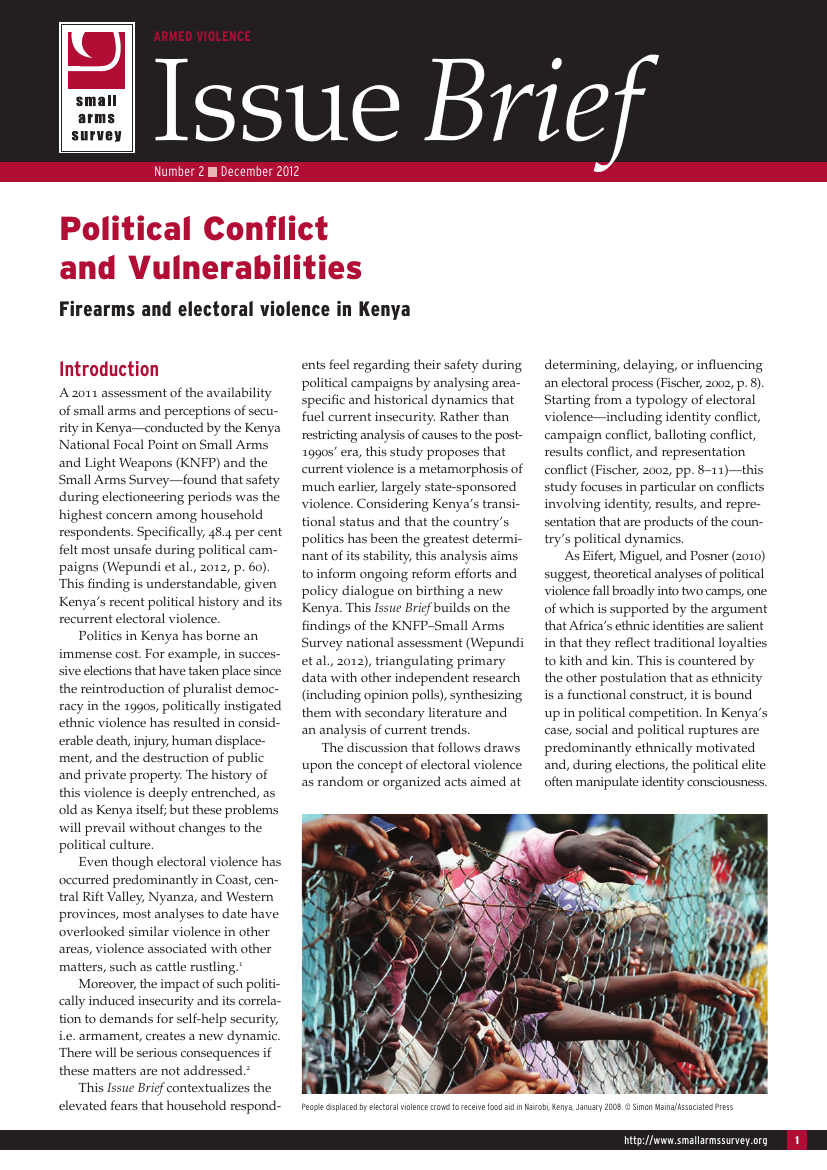
Political Conflict and Vulnerabilities: Firearms and Electoral Violence in Kenya (AV Issue Brief 2)
A recent survey on perceptions of security in Kenya found that the highest area of concern among household respondents was safety during electioneering periods. Specifically, 48.4 per cent felt most unsafe during political campaigns: an understandable anxiety, given Kenya’s recent political history and its recurrent electoral violence.
Political Conflict and Vulnerabilities: Firearms and electoral violence in Kenya examines the phenomenon of electoral violence, tracing its roots to a history of politically instigated ethnic violence dating back to the reintroduction of pluralist democracy in the 1990s, and further back to the colonial era.It also discusses the largely overlooked connections between hotspots for political violence and armed violence in other areas—such as that associated with cattle raids by pastoralist communities—and the potential for firearms to flow between these areas.
The main findings of this Issue Brief are:
- Political violence is not new to Kenya; and current manifestations need to be understood in a historical context.
- The threat of electoral violence for 2013 must be looked at from the standpoint of how existing divisions and conflicts manifest themselves in the overall political situation of Kenya.
- Small arms, an exacerbating factor in current violence, pose a threat as the 2013 elections approach. Importantly, the prevalence of arms anywhere in the country potentially results in easy access to weapons wherever electoral violence flares up.
- Certain steps have been taken to address these issues, but they can be deemed adequate only if they stay true to the new constitution.
Have your say about Small Arms Survey publications and products: take 5 minutes to fill out our questionnaire.